%20(1).jpg)
Architectural Highlights
HISTORIC GRANDEUR AND MODERN MARVELS
Step onto the grand stage of Chicago's urban drama: The Magnificent Mile. Imagine the vision of architects Burnham and Bennett in 1909, their Parisian-inspired dreams taking root in this once-underused space. Stand where history and luxury collide – DuSable Bridge, once Michigan Avenue Bridge, offers a dazzling panorama of architectural icons.
Gaze up at titans of steel and stone: the Wrigley Building's clock tower ticking timelessly, the Tribune Tower's Gothic gargoyles whispering secrets, and the sleek, modern curves of Trump Tower piercing the sky.
But the story doesn't end there. Stroll north, past the InterContinental's elegant Art Deco, and lose yourself in the grandeur of the Women's Athletic Club. The Water Tower, a beacon of resilience, stands sentinel to the past, while the Gothic whispers of Fourth Presbyterian Church linger on the breeze.
Go further – every corner, a masterpiece: Mies van der Rohe's minimalist perfection, Frank Lloyd Wright's geometric artistry, and the intricate brilliance of Louis Sullivan and Henry Ives Cobb. Their legacies breathe life into every brick and beam.
This is not just a street, it's a living museum. Wander at your own pace, or delve deeper with a guided tour – uncover the stories etched in stone, the dreams translated into steel. The Magnificent Mile awaits your visit.
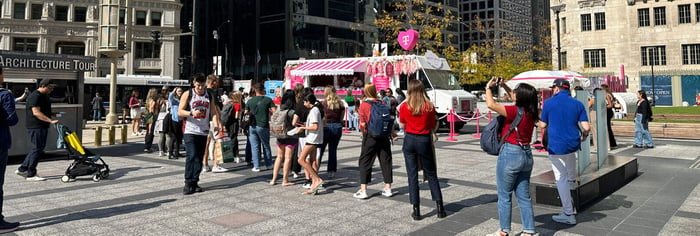
Book Pioneer Court
Learn MoreHIGHLIGHTS
DuSable Bridge
On May 14, 1920, the bridge linking South Michigan Avenue to Pine Street (now a continuation of Michigan Avenue) was officially opened. In 1928, the monumental bridge towers were built with Bedford stone and mansard roofs. Lined with flags, the bridge serves as a grand gateway to The Magnificent Mile and features detailed bas-relief sculptures depicting early Chicago history.
A double-deck bascule bridge named in honor of Jean Baptiste Point du Sable, Chicago’s first permanent resident. A fur trader of African descent, he established a permanent homestead and trading post near the mouth of the Chicago River in the 1780s.
.jpg?width=680&name=MagMile1Summer2022_060%20(2).jpg)
The Wrigley Building
An architectural gem blending timeless beauty with modern functionality, serving as a hub for businesses and a venue for unforgettable events.
The design was inspired by a cathedral in Seville, Spain. One of Chicago's most recognized buildings because the brilliant night-time illumination of its beautiful white terra cotta exterior, clock, and position facing the entry of the Chicago River.
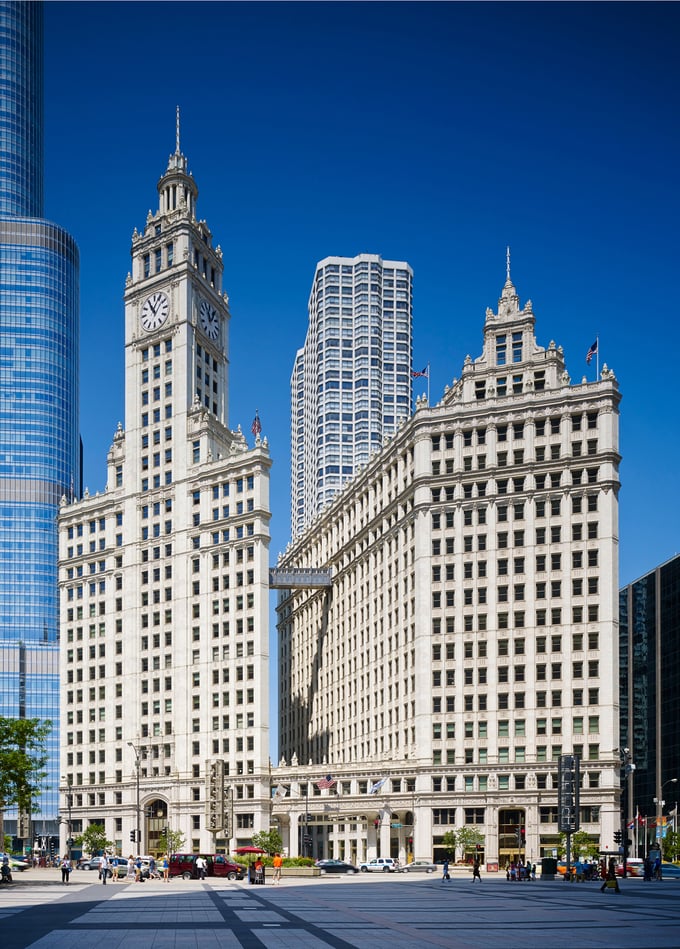
Tribune Tower
Home to the Chicago Tribune newspaper, this Gothic revival design won first place in a competition to build the world's most beautiful building. Flying buttresses adorn the top of the tower. The facade is inset with stones from famous buildings throughout the world.
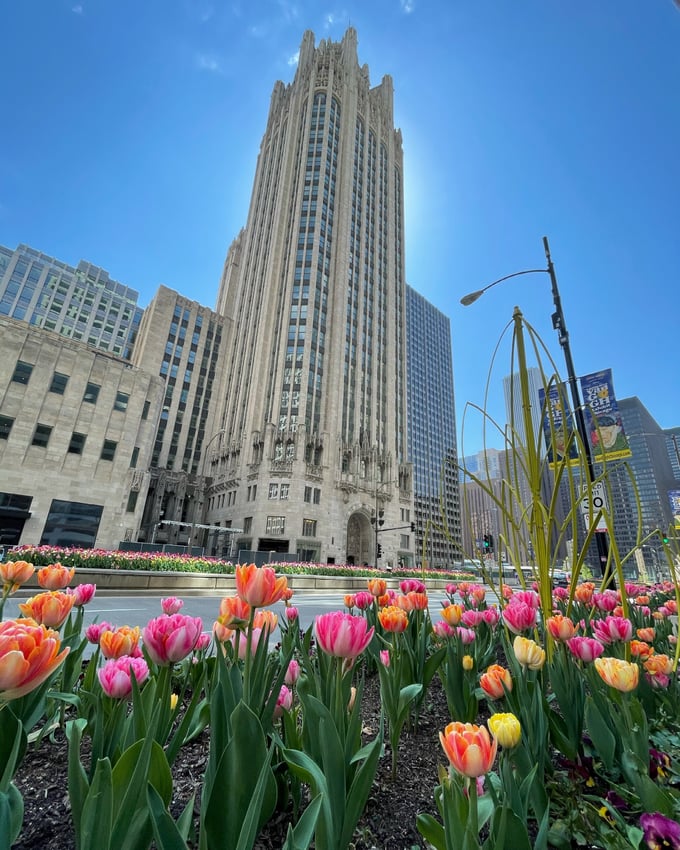
Jane Byrne Park
Named after the first woman mayor of Chicago, the park is open 24 hours a day, 7 days a week and is a popular spot for people-watching, sunbathing, and enjoying the city skyline.
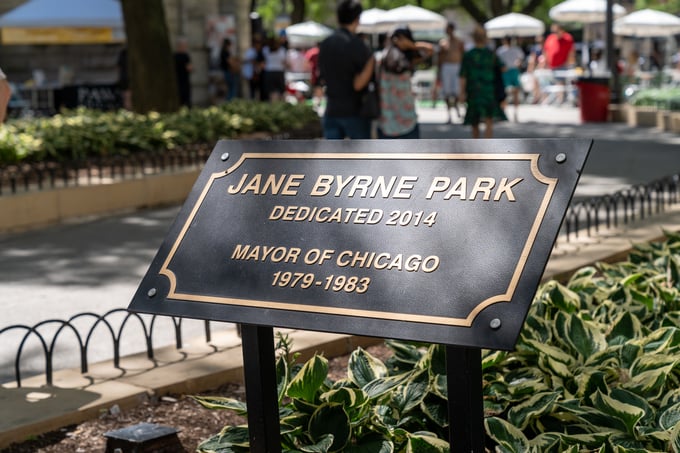
The Water Tower
Originally built as a water reservoir and miraculously survived the Great Chicago Fire of 1871, becoming a symbol of hope and resilience.
.jpg?width=680&name=Mag%20Mile%208-1-23%20Water%20Tower%20(1).jpg)
875 North Michigan Avenue
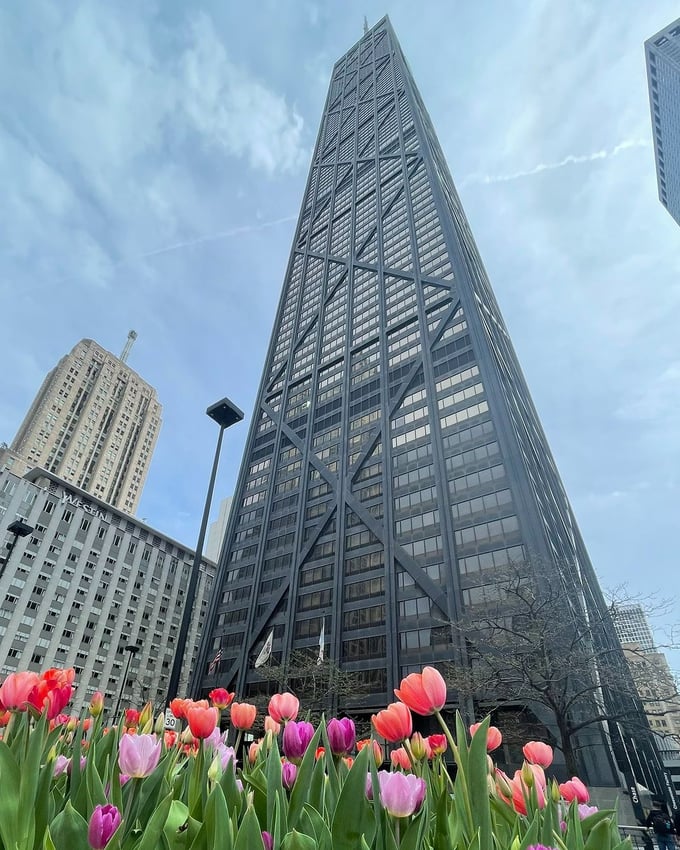
Navy Pier
Stretching into Lake Michigan, serving as the most popular tourist destination in Illinois, providing year-round activities across its 50 acres of waterfront space.
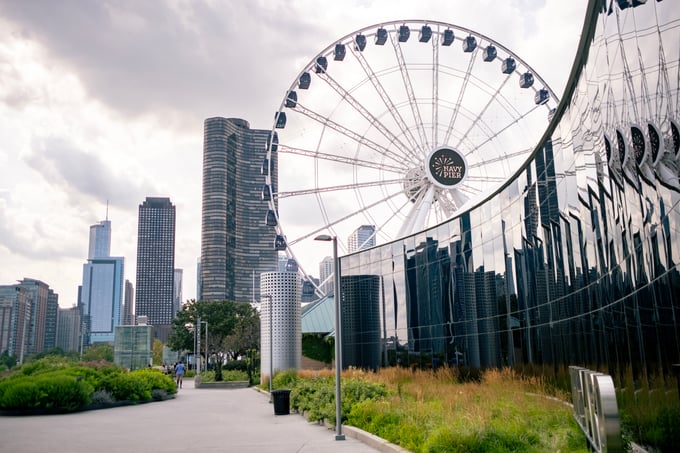
Pioneer Court
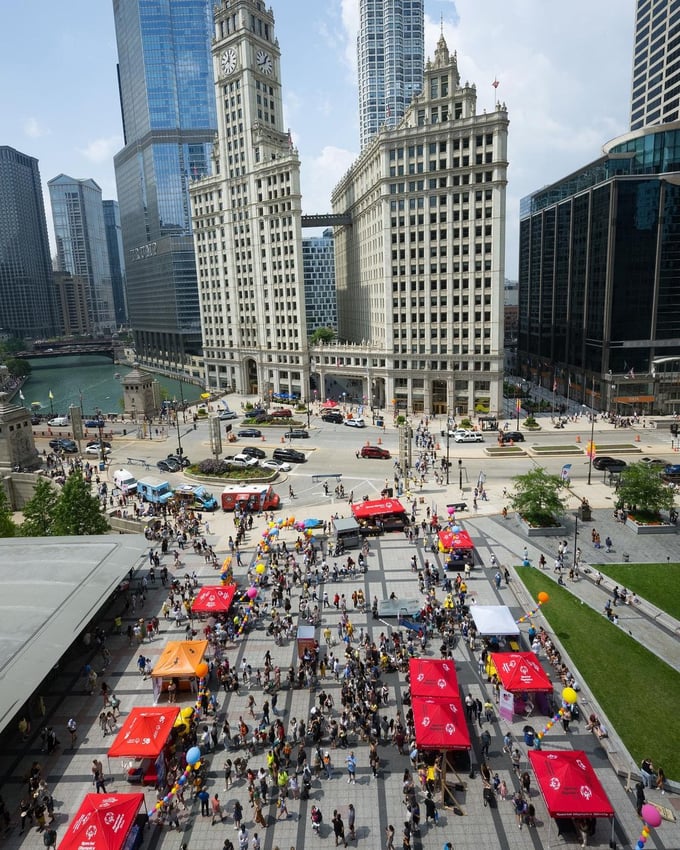
-1.png?width=756&height=111&name=Magnificent%20Mile%20Logo-01%20(2)-1.png)